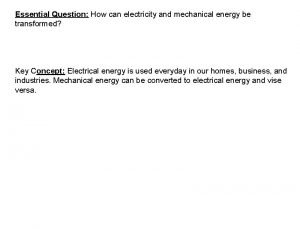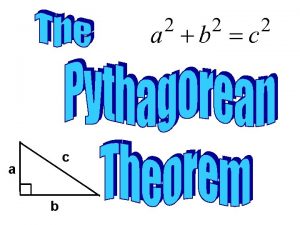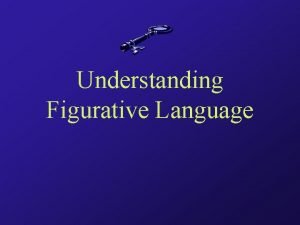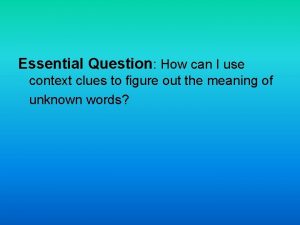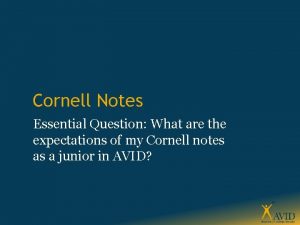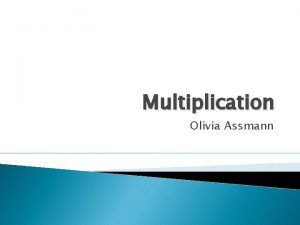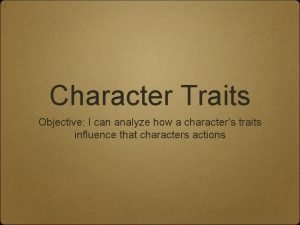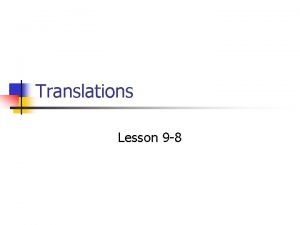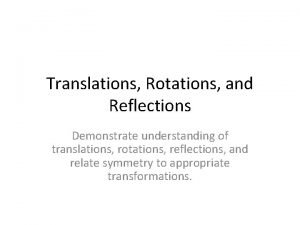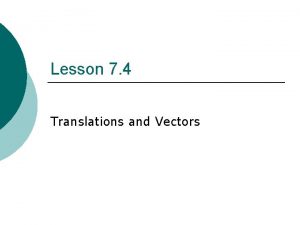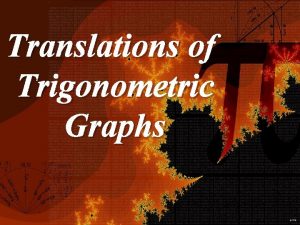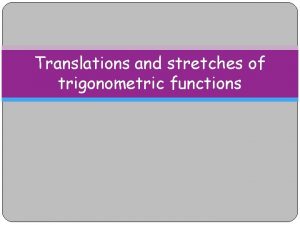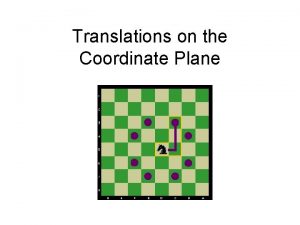Properties of Translations Essential Question How do you















- Slides: 15

Properties of Translations Essential Question? How do you describe the properties of translations and their effect on the congruence and orientation of figures? 8. G. 1, 8. G. 3

Common Core Standard: 8. G ─ Understand congruence and similarity using physical models, transparencies, or geometry software. 1. Verify experimentally the properties of rotations, reflections, and translations: a. Lines are taken to lines, and line segments to line segments of the same length. b. Angles are taken to angles of the same measure. c. Parallel lines are taken to parallel lines. 3. Describe the effect of dilations, translations, rotations, and reflections on two-dimensional figures using coordinates.

Objectives: • To describe the properties of translation and their effect on the congruence and orientation of figures.

Properties of Translations We’ve already learned that a function is a rule that assigns exactly one output to each input. A TRANSFORMATION is a FUNCTION that describes a change in the position, size, or shape of a figure. The input of a transformation in the PREIMAGE. The output of a transformation in the IMAGE. A TRANSLATION is a transformation that slides a figure along a straight line. When a point experiences a transformation, the resulting point is called PRIME. The symbol for prime is ´. i. e. point A becomes A´.

Triangle ABC (△ABC), shown on the coordinate plane, is the PREIMAGE (input). The arrow shows the motion of a translation and how point A is translated to point A´. △ABC A (PREIMAGE) C B A´

The ray that connects Point A and Point A´ is called a VECTOR A VECTOR is a quantity having direction as well as magnitude (how long it is), especially as determining the position of one point in space relative to another. A C B A´

Now lets TRANSLATE triangle ABC (△ABC), to its new position on the coordinate plane. Triangle ABC (△ABC) will become triangle A´B´C´(△A´B´C´). The preimage BECOMES the image. △ABC A (PREIMAGE) C A´ B △A´B´C´ C´ B´ (IMAGE)

△ABC The triangle moves 12 units to the right. Then it moves 6 units down. A (PREIMAGE) C A´ B △A´B´C´ C´ B´ (IMAGE)

It is important to notice that the vector connecting Point A and Point A´ has EXACTLY the same length and direction as the vectors connecting all points of the preimage to the image. △ABC A (PREIMAGE) C A´ B △A´B´C´ C´ B´ (IMAGE)

How is the orientation of the triangle affected by the translation? What statements can we make regarding the translation of triangle ABC (△ABC), to triangle A´B´C´(△A´B´C´)? △ABC A (PREIMAGE) C A´ B △A´B´C´ C´ B´ (IMAGE)

Now let us examine trapezoid TRAP? TRANSLATE trapezoid TRAP 5 units to the left and 3 units up. Label the vertices of the image T´, R´, A´, and P´. T´ R´ T P´ R A´ P A

The measures of the corresponding sides of the image and preimage are equal. When measurements of line segments are equal, the word we use is CONGRUENT T´ R´ T P´ R A´ P A

The measures of the corresponding angles of the image and preimage are equal. When measurements of angles are equal, the word we use is CONGRUENT ∠RAP ≅ ∠R´A´P´ ∠TRA ≅ ∠ T´R´A´ ∠APT ≅ ∠ A´P´T´ ∠PTR ≅ ∠ P´T´R´ T´ R´ T P´ R A´ P A

We now know that ALL corresponding sides of the image and preimage are CONGRUENT. We also know that ALL corresponding angles of the image and preimage are CONGRUENT. We can now say that trapezoid TRAP is CONGRUENT to trapezoid T´R´A´P´ TRAP ≅ T´R´A´P´ What do you think we can now say about the image and preimage after a translation? T´ R´ T P´ R A´ P A

TRANSLATIONS • The IMAGE resulting from a TRANSLATION is THE EXACT SAME SHAPE & SIZE as the PREIMAGE! • The IMAGE resulting from a TRANSLATION is ALWAYS CONGRUENT to the PREIMAGE! • ORIENTATION does NOT CHANGE!
 Properties of translations
Properties of translations Costas question
Costas question Characteristics of lipids
Characteristics of lipids Figurative language essential questions
Figurative language essential questions Pythagorean theorem essential questions
Pythagorean theorem essential questions Essential question generator
Essential question generator Pythagorean theorem essential questions
Pythagorean theorem essential questions Language
Language Essential question about identity
Essential question about identity Context clues essential questions
Context clues essential questions Cornell notes essential question
Cornell notes essential question What if questions to ask
What if questions to ask Essential questions for multiplication
Essential questions for multiplication Essential question gif
Essential question gif Internal and external character traits
Internal and external character traits Essential question cornell notes
Essential question cornell notes





